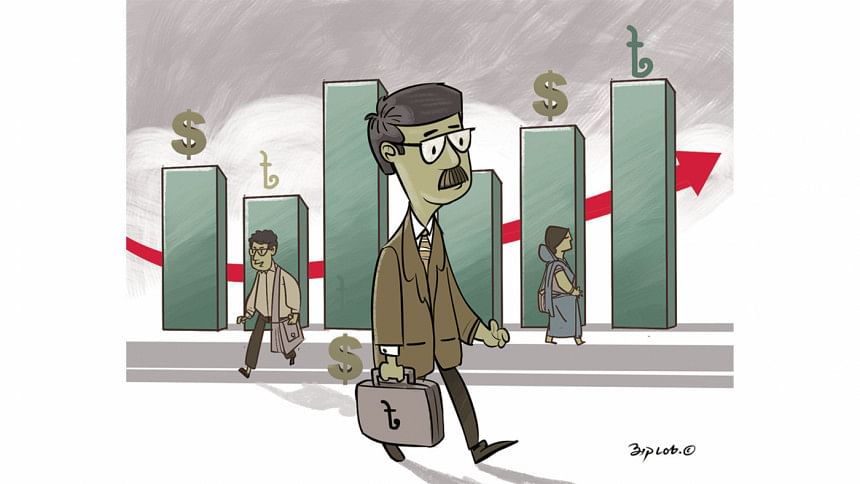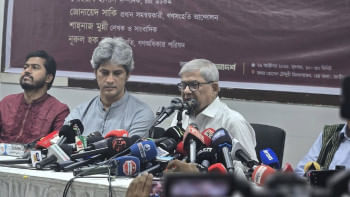Assessing economic development: An unconventional approach

Economic development can be viewed from different perspectives, but the overriding theme is one of improving human well-being. Although economic development is commonly measured by growth in the gross domestic product or GDP, its shortcomings in representing the well-being of a nation are well-known. GDP ignores non-income aspects of well-being, it does not take into account the environmental damage caused by economic activities, and it tends to ignore or undervalue things that contribute to the quality of life but are not amenable to valuation in monetary terms. The estimation of GDP is based on market prices that reflect society's preferences only at the given distribution of purchasing power in the economy, which is often highly unequal.
The most striking example of market prices not doing a good job is perhaps provided by such precious metals as gold or diamond, which not only happen to be perhaps the least useful among all minerals, but also the mining of which causes huge environmental damage. The idea of gauging economic development by indicators other than GDP, such as the Human Development Index, or other measures that reflect footprints of environmental damage, has grown out of the dissatisfaction with GDP.
When a visitor from a less developed country arrives at an affluent, or a relatively more advanced country, he can see the difference instantly from casual observation; he does not have to check with publications of the World Bank or the UNDP to find the relative ranking of that country in terms of per capita GDP or the Human Development Index. Knowing what those apparently visible signs of development are may sometimes help one to have a reality check on the claims of his government regarding economic development, and may also reveal some missing elements of development in his own country.
So, is it possible to list some readily visible indicators of development in a way that a scoring system based on those indicators can reasonably correspond to the degree of development across countries? After all, a student of economics, doing elaborate statistical exercises in measuring and comparing economic development across countries, should not be accused of missing things which even the untrained eyes of a visitor can easily spot. Leaving aside a visitor's first general impression about how orderly the immigration procedures are at the entry airport, the signs of development will be obviously more detectable in metropolitan areas, since that is where economic development has the most impact.
The following could perhaps serve as a tentative list: (1) The quality of public transport—whether a time schedule is maintained and passengers get in and out at fixed stops and not in the middle of the road, and the very look of the vehicles; (2) How orderly is the traffic—adherence to traffic rules and the extent of sound pollution through honking, whether roads are well maintained and there are not many potholes, how much priority is given to pedestrian facilities, and the extent to which the sidewalks of main roads are crowded by hawkers, vendors and make-shift shops; (3) The quality of tap water, the efficacy of the waste management system and the availability of public toilets; (4) The availability and quality of public libraries; and (5) The aesthetic beauty of the main riverside or the lakeside that grows naturally with the development of urban amenities, as distinct from any artificial beautification projects that give a lacklustre look because of poor maintenance.
There may be other candidates for inclusion in the list, but there is also no point of lengthening the list if a single indicator can represent many other hidden indicators. Notice that we have not included such indicators like the degree of air pollution or the number of pavement dwellers, since there may not be a regular pattern to match with economic development (the San Francisco area in the US may have more pavement dwellers than in many cities in poor countries). If the visitor happens to venture into the countryside, there may be a few visible signs of development, such as the outward look of the homesteads, the availability of power supply, or the nature of agricultural implements on farming land.
A visiting economist will, however, be interested to delve deeper, possibly by staying longer in the country he is visiting. What signs will he be looking for to assess the stage of development, and the quality of governance that goes with it? The Nobel laureate economist Douglas North once noted that an economic expert arriving in a developing country should refrain from providing policy advice to the government until he has spent at least six months in that country.
A discerning economist will note how much time, trouble and speed money (that is, bribe) it takes to get even a simple thing done, like getting a permit to stay longer than originally permitted by his visa. Are things done more through personal connections or according to impersonal rules that do not discriminate between the elite and the ordinary citizens? He may be trying to assess the quality of human resources and the education system as reflected, say, in the number of expatriates in technical and managerial positions, and in the quality of the college and university graduates; do many of these educated young seek a job abroad, which may be a sign that the education they have received has not contributed much to their employability at home, and also may indicate their lack of confidence in the country's economic future?
Are there many large-scale infrastructure projects of only "prestige value" but not well-planned to serve their purpose? Even amid a general environment of deficient governance, do there still exist at least some government agencies that are well-resourced, professionally competent and able to work out solutions and act promptly? Such dynamic agencies can potentially set examples for the work culture in other agencies, or at least can act as agents of change in their spheres of activity.
Overall, one may be looking for a system of governance in which there are vertical mechanisms for accountability of the government functionaries at each layer of administration, as well as horizontal coordination across various government agencies. The opposite extreme is perhaps an unwieldy leviathan-like governance structure in which even the well-meaning and honest actors feel alienated; although aware of the pitfalls of the system, they are unable to do anything about it on their own, like the characters in Kafka's novels.
Wahiduddin Mahmud is a former professor of economics at the University of Dhaka, and is currently Chairman of the Economic Research Group, Dhaka. This is an extract from his forthcoming book Markets, Morals and Economic Development.

 For all latest news, follow The Daily Star's Google News channel.
For all latest news, follow The Daily Star's Google News channel. 



Comments